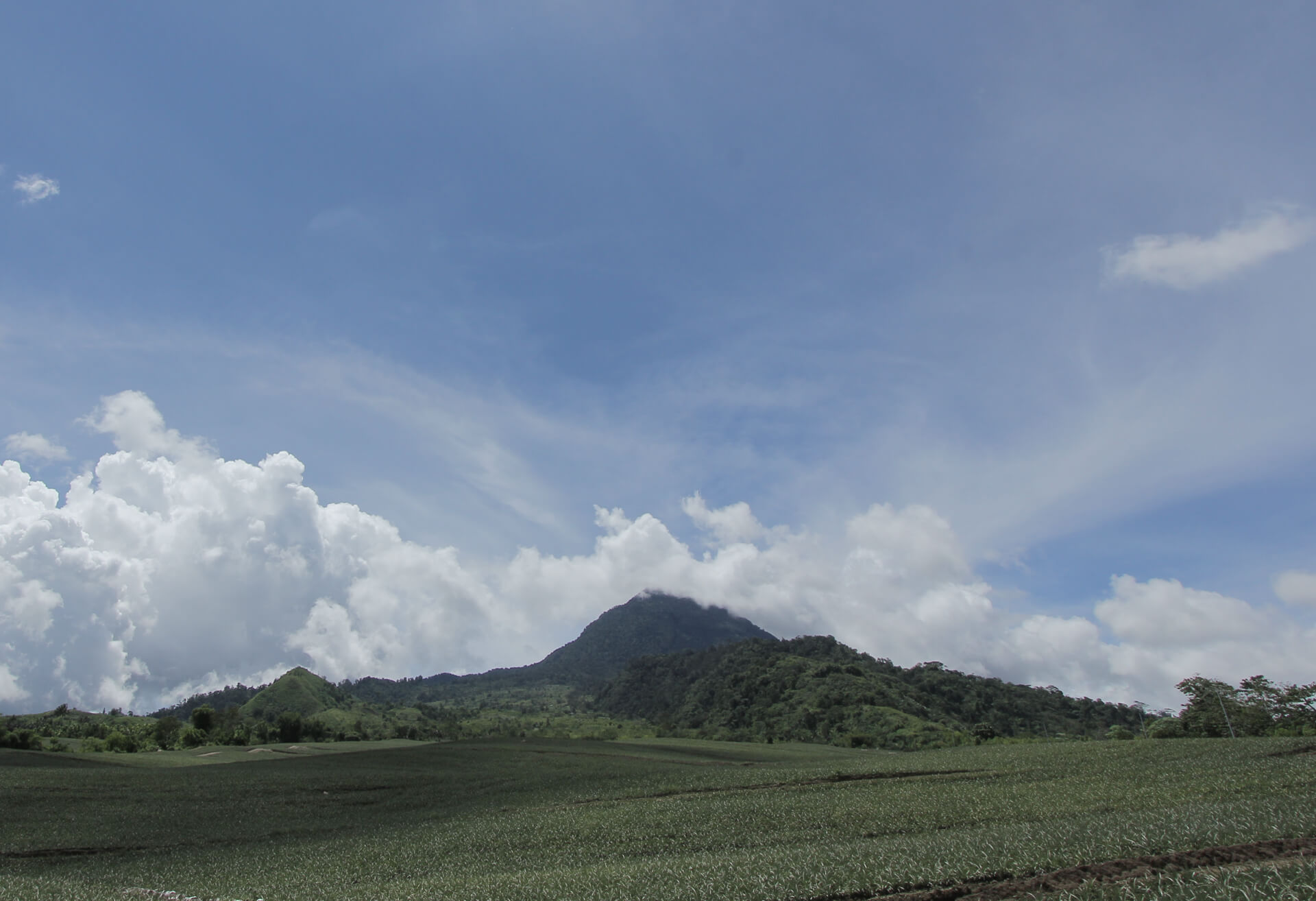Arabica and Robusta Varieties and their Use in the World’s Most Expensive Coffees
The Most Expensive Coffee is generally priced upon a combination of rarity and taste; needing to greatly excel in both categories.
To better understand why some coffees are in great demand we will need to take a quick look at the two main types of beans and how they vary dramatically in their genetic make up and agricultural growth conditions.
There are several distinct coffee types. The most common variety, and therefore the most affordable is Robusta. Robusta beans contain more caffeine than Arabica beans, are more resistant to pests and diseases, can grow in a greater range of climate, but are not nearly as flavorful as the larger Coffea arabica beans. As these beans are much easier to grow, it contributes to their lower price and wider availability. that is not to say that all Robusta is bad, as their are many very good tasting blends available on the market, and many people like the more bitter taste and caffeine kick that it can provide.
The most expensive coffees are generally pure Arabica beans, and as mentioned there are also some very tasty blends available which are made using a combination of Arabica and Robusta. Some of the most expensive coffees in the world, such as Kopi Luwak and Peaberry may be produced from Robusta or Arabica beans. Rest assured that the coffee beans consumed by the Palm Civets that produce the coffee available on the KopiLuwakDirect website are pure high quality Arabica beans.
Kopi Luwak or Civet Coffee
What is it?
Kopi Luwak is a variety of coffee that involves coffee cherries being first partially digested by the Asian palm civet. The Asian palm civet is a small animal that vaguely resembles a small raccoon. These small animals are also often compared to cats and ferrets. Civets are nocturnal and reside in the forest, high amid the trees. These animals are native to India, Nepal, Bangladesh, Myanmar, parts of Malaysia, Thailand, Sri Lanka, Indonesia, Japan, Cambodia, and Vietnam, and share similar environments. These animals are considered a nuisance in many parts of Sri Lanka. This status is due to their ability to climb gutters and trees, resulting in them taking up residence in ceilings and attics, causing damage and making lots of noise in the night.
When these animals eat coffee cherries, the cherry and the pulp are digested, but the coffee bean is left intact. This coffee is made from the collected and subsequently processed feces of the Asian palm civet. As the coffee cherries pass through the digestive system of the civet fermentation occurs. This is thought to enhance the coffee on two fronts. First, the animals select and eat specific coffee cherries, which are the best available. Secondly, the process of the civet digesting the cherries changes the chemical composition of the coffee cherries through the alteration of proteins. During digestion, a type of fermentation occurs that gives this coffee its unique taste. The taste of Kopi luwak has been described as smooth and earthy. It is also often said to be less bitter and richer than other coffee varieties. The taste is very dependent upon which coffee cherries are eaten by the civet and by the area that the coffee trees grow in.
Where does it come from?
Given that the Asian palm civet is necessary for the production of this coffee variety, it is naturally produced where this animal lives; mainly in the forests of Southeast Asia. This exotic coffee variety originates from Indonesia, and was first produced in Dutch colonised Indonesian islands such as Jakarta, Bali, and Sumatra. Now it is largely produced in Indonesia, the Philippines, and Vietnam.
Controversy
This type of coffee is also steeped in controversy. The main concerns are that a lot (especially the Vietnamese versions) of the Kopi luwak coffee on the market is fake. A further concern is that if civet farming. Fake Kopi luwak is mostly just a case of dishonest coffee makers treating their average blends with chemicals to pass off as Kopi luwak to make more money. The fake coffee makes up an estimated 75% of Kopi luwak coffee for sale on the market today.
Due to the growing popularity of this type of coffee, the process has become more industrialized. Collecting the droppings of the civets that freely roam the forest is hard work, in order to make this process more efficient civets are captured. This poses a significant threat to the wild civet population. Additionally, these creatures are very shy and prefer to remain solitary most of the time. For these reasons, keeping them in captivity is particularly cruel.
Additionally, these animals do not solely exist on a diet of coffee cherries, so emphasizing this particular food is unnecessary and wreaks havoc on their health. Furthermore, one step of the process that makes Kopi luwak a unique and great tasting coffee is the civet’s selection of particular coffee cherries, in captivity choice is taken away from them.
Rest assured that the coffee beans sold by KopiLuwakDirect are produced by free roaming civets and is harvested by fairly paid people from the local population with an expertise at finding and gathering civet coffee droppings in the forests.
How much does it cost?
True Kopi luwak coffee is widely considered as one the most expensive coffees in the world. Currently a cup of this specialty brew can cost anywhere from $35 to $100 per cup at an average coffee shop, if they stock this variety to sell on to their customers then the price is more like $100 to $800 per small bag. Given these prices, it is clear that this coffee variety is very expensive, about ten times more so than an average cup of Joe at a cafe; it is usually enjoyed by the true coffee connoisseur.
To buy Kopi Luwak, please visit our homepage here.
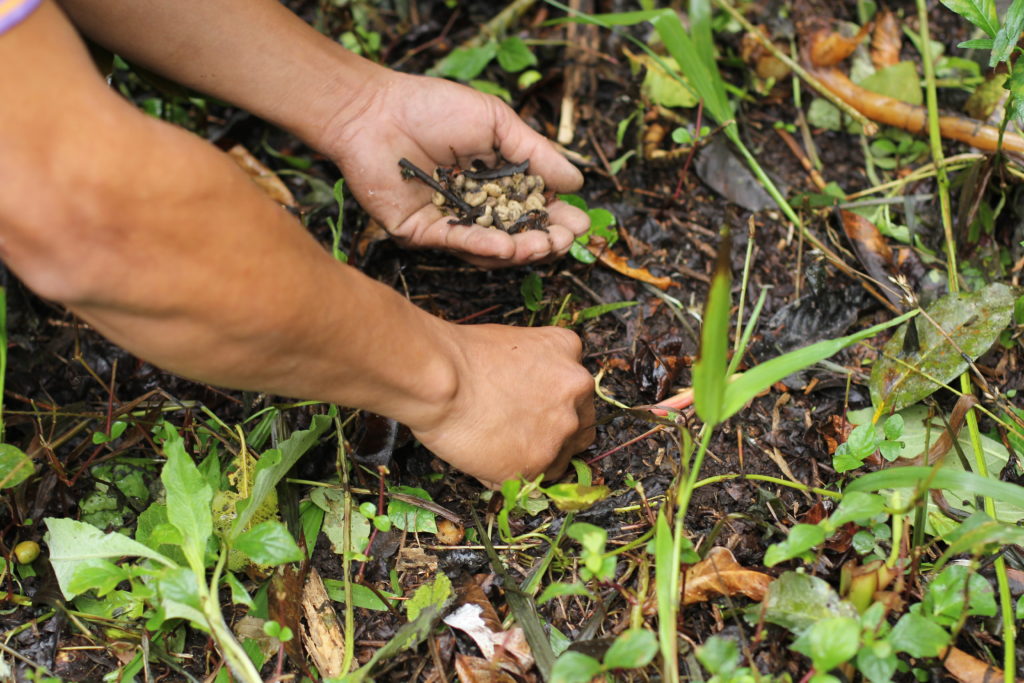
Collecting Wild Kopi Luwak
Peaberry Coffee
What is it?
The Peaberry is a type of coffee bean named for its pea-like appearance (in contrast with normal two seeded flat coffee beans). This bean develops when only one of the two seeds inside the coffee bean is fertilized. When this occurs the single seed has nothing pressing against it to flatten it, so it grows into a more oval shape. Only around 5% of all coffee beans that have been harvested are peaberry beans. Coffee made with peaberry beans has been described as being sweeter and more overall flavorful than traditional coffee beans.
The Peaberry coffee beans are thought to roast more evenly than traditional flat beans. This may be due to their whole round shape; a traditional bean has a split bean appearance. This shape allows them to roll freely through the roasting chamber, enabling a more even roast. There is also speculation that peaberry beans tend to have a higher density than traditional beans, if true this would improve heat transfer during roasting. Whatever the cause, it is clear the peaberry beans do taste different from their flat brethren.
Where does it come from?
Peaberry coffee is possible in all types of coffee bean production, these unique beans are not usually revealed until the coffee is processed and sorted. However, Brazil, Kenya, and Tanzania do have established industries producing peaberry coffee regularly. It is not that these countries have a higher instance of peaberry beans in their crop, it is just that they have the facilities to support the intensity of labor to sort the beans out.
How much does it cost?
Peaberry coffee may not hold the title of the most expensive coffee in the world, as Kopi luwak currently holds that title, but it does cost a pretty penny. This is mainly due to extra labor required to extract these beans from the “normal” flat beans but is also because the natural coffee bean mutation cannot be replicated. The actual cost of this coffee experience varies greatly depending upon the type of coffee beans you are drinking. However, you will definitely see a great mark up between a traditional bean and a peaberry bean of the same type.
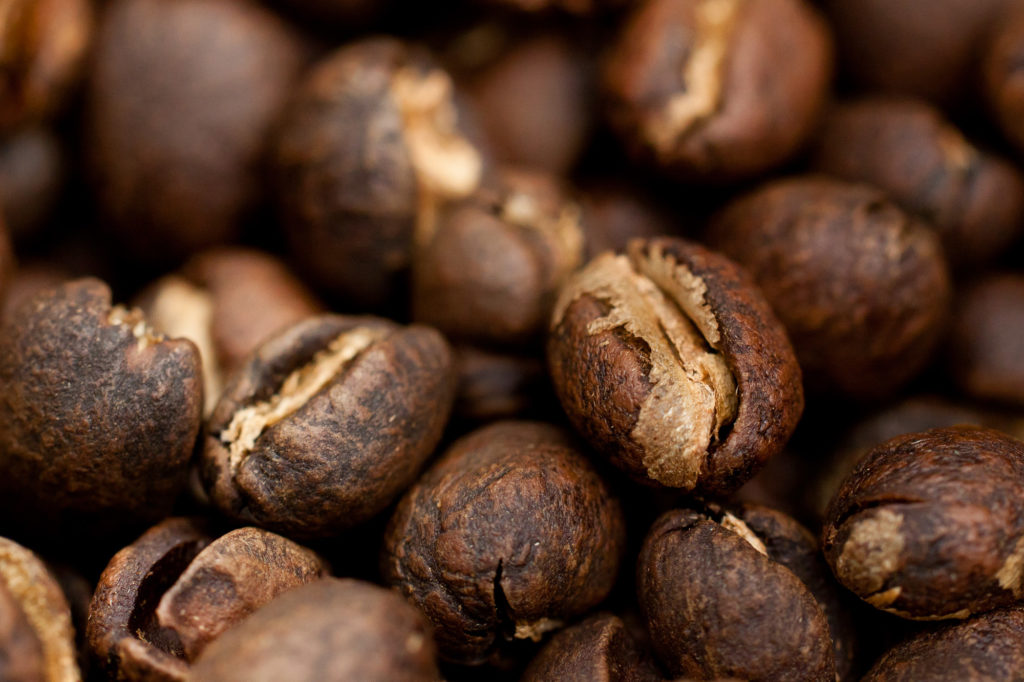
Peaberry Coffee. Courtesy of Chard Chassin Flickr https://flic.kr/p/9wfY8r
Arabica Varieties
The Arabica coffee varieties are well known as being the best tasting and aromatic coffee bean option. These are both rich in flavor and high in quality. These beans must be grown in specific condition to reach their potential, which adds to their value. The notorious Geisha coffee is one variety of Arabica, as well as Blue Mountain Jamaican Coffee, Kona Coffee, Molokai Coffee, and of course our Kopi Luwak Direct beans.
Geisha Coffee
What is it?
Geisha coffee is an expensive and rare variety that was first introduced at the 2004 Best of Panama coffee competition. Sometimes Geisha is also called Gesha coffee, but has nothing to do with the geishas of Japan. The taste of Geisha coffee is generally described as delicate and floral, with bergamot and honeysuckle generally being the dominant flavors. This type of coffee is also jasmine scented. Geisha coffee is resistant to leaf rust, a common coffee disease. In Panama, Hacienda la Esmerelda is the primary roaster of this variety of coffee.
Hacienda la Esmeralda coffee hails from a Panamanian coffee farm that also houses dairy cows. There are several varieties of this coffee available, including the infamous Geisha coffee.
They call the arrival of Geisha coffee to their farm serendipitous; they planted them before specialty coffee was popularized. They also separated lots the year that Geisha was planted here, and from the start, every taster was impressed. This led to Hacienda la Esmeralda winning the 2004 Best of Panama competition with their Geisha coffee, and with the highest price paid for coffee at auction, setting a new record. Hacienda la Esmeralda’s other coffee variety is Catuai. This Arabica bean’s name means “very good” in the aboriginal language Tupi-Guarani of South America. This coffee has a sweet fruity and chocolate taste.
Hacienda la Esmeralda is committed to quality and sustainability. They take care of their workers, particularly those who pick Geisha beans. In addition, because the lots of coffee trees are separated, harvesting times can be specifically targeted to ensure beans of both types are picked at their peak. They also roast beans in a variety of ways to differentiate between their many brands and varieties.
Where does Geisha coffee come from?
Geisha coffee was originally discovered in the 1930’s in the Gori Gesha forest of Ethiopia (hence its alternative name). However, it gained fame through winning a Panamanian coffee competition in 2004. Panama is generally known as the best place to get Geisha coffee, but as with most other coffee speciality it is available at numerous places across the world. In addition to Panama, this type is now commonly grown in Colombia, Guatemala, El Salvador, and Honduras. As climate and soil greatly effects coffee quality it is still thought that Panama grown Geisha is still the best.
The famous Geisha coffee produced by Hacienda la Esmeralda is located in the highlands of Boquete, which is located in the southwest region of the Republic of Panama. Boquete is essentially a small mountain town along the Caldera River. The climate here is cooler due to the elevation, which is around 3,900 feet above sea level.
How much does Geisha coffee cost?
There are always slight variations in price for a particular type of coffee, depending on the roaster and the region it is produced. Geisha coffee is no different; you can find this variety for hundreds of dollars a pound, or at a more reasonable $80 per pound. The availability and price may be more attainable in the winter and early spring when several well-known roasters like La Colombe, Verve, or Square One offer this type for sale. Meanwhile a cup of Geisha coffee varies in price just as wildly. In Dubai this can be $68 for one cup, or $18 in New York City, while in Panama where this type of coffee is sourced a cup runs for around $9.
If you are interested in purchasing the original then a pound of Hacienda la Esmeralda Geisha Coffee can cost from as little as $50 per pound. However, in a recent auction, a 100-pound lot of it was sold for $601 per pound! The Catuai varieties from Hacienda la Esmeralda farm are much more affordable at $20 to $30 per pound. The cost can vary widely depending on the lot and quality of coffee you are looking for, which is based on the yearly climatical conditions.
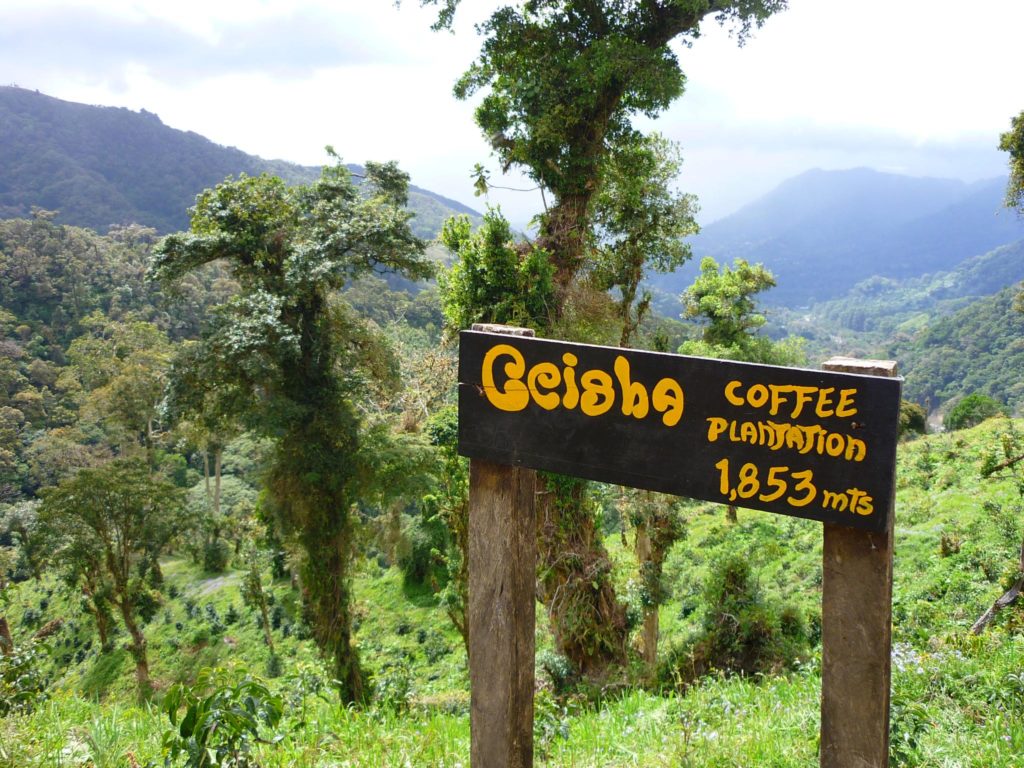
Geisha Coffee Plantation – Courtesy of Andrea https://flic.kr/p/9e5s5w
Blue Mountain Coffee
What is it?
Jamaican Blue Mountain Coffee is a specific variety of coffee that grows in the Blue Mountains of Jamaica. The appeal of this brew is its mild flavour, with a near absence of bitterness. The taste has been described as clean and vibrant, with notes of cocoa and nuts. The aroma is floral and sweet. An interesting fact is that the Tia Maria coffee liqueur uses Jamaican Blue Mountain Coffee beans as its flavor base.
To protect the sanctity of the Blue Mountain name, the Jamaica Agricultural Commodities Regulatory Authority passed the Coffee Industry Regulation Act. This act regulates the use of the Blue Mountain trademark to only those authorized by the board. There are specifications for the elevation at which Blue Mountain coffee can be grown. This true Blue Mountain coffee must be grown in the Blue Mountains at an elevation between 3,000 and 5,500 feet. No coffee is grown above this elevation because that area is a forest preserve. Coffee grown from 1,500 to 3,000 feet is called Jamaica High Mountain, and coffee grown below 1,500 feet is called Jamaica Low Mountain or Jamaica Supreme.
Where does it derive from?
As the name suggests, this coffee is grown in the Blue Mountains of Jamaica, located between Kingston and Port Antonio. These mountains are some of the highest in the Caribbean, rising to 7,402 feet above sea level. The climate in the Blue Mountains is cool with a high level of rainfall, leading to a misty atmosphere. The soil here is rich, making this area idyllic for the growing of coffee. The only coffee that can officially sport this name is grown on the Blue Mountain Ridge running through the parishes of St. Mary, St. Andrew, St. Thomas, and Portland.
How much does it cost?
Due to the Coffee Industry Regulation Act, Blue Mountain coffee has become quite exclusive. Only 4-5 million pounds of coffee beans qualify each year to bear the Jamaican Blue Mountain Coffee brand name. Additionally, 80% of this coffee is exported to Japan. One pound of beans will likely cost around $50, but can span a larger range depending on the specific farm source.
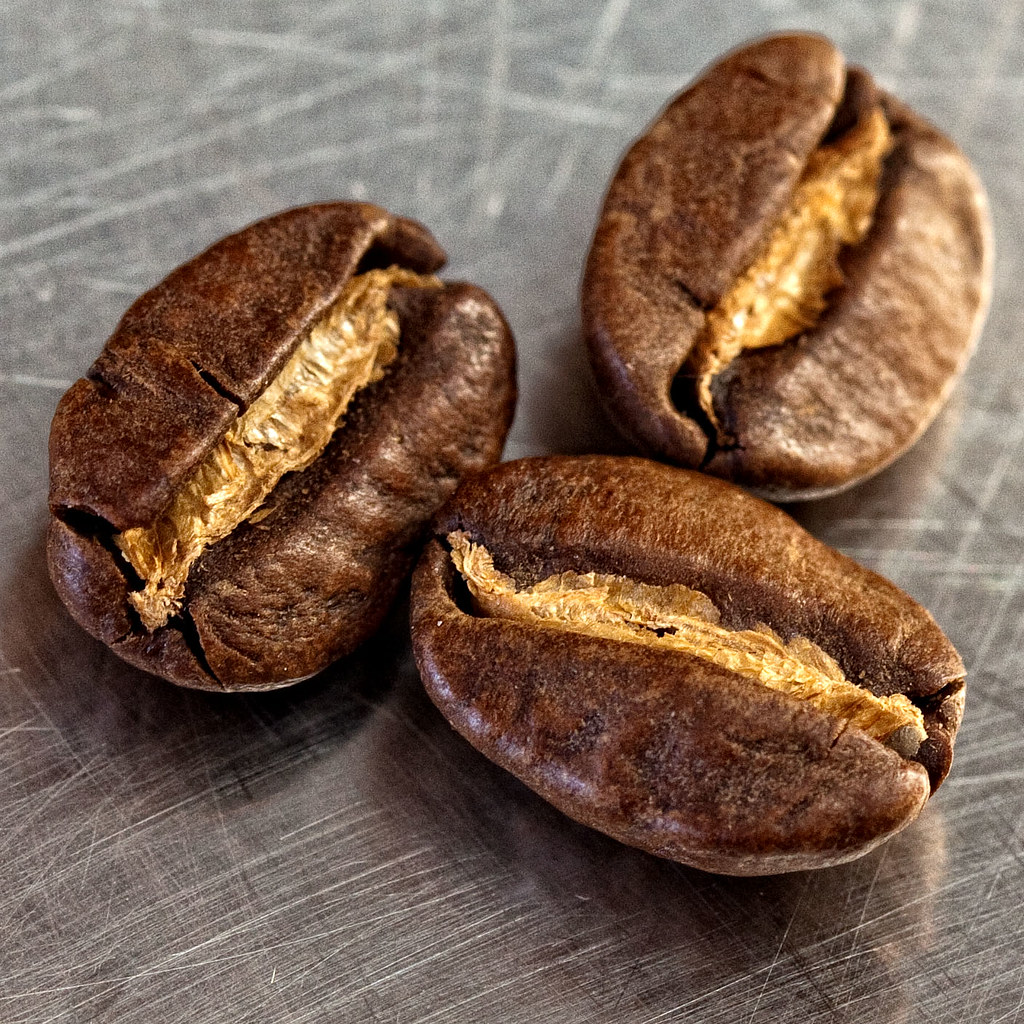
Jamaica Blue Mountain Coffee – Picture Courtesy of https://flic.kr/p/bw8pUR
Kona Coffee
What is it?
Kona coffee is one of the most sought after and expensive coffees in the world. It is grown in the Kona region of Hawaii where the soil is volcanic, porous, and rich with minerals. This combined with sunny weather in the morning, cooler rainy afternoons, and mild nights makes this area a perfect place for coffee growing. Due to numerous fakes and lesser blends, Hawaiian labelling laws require that the percentage of true Kona coffee be displayed on the label. There are many varieties of Kona blends or Kona style coffee, so this law enables the consumer to know exactly what they are purchasing. The taste of this coffee is unmistakable. You will taste milk, brown sugar, chocolate, honey, and a little fruitiness. This coffee is bright and crisp with a clean taste. This is a smooth brew.
Where does it come from?
Kona Coffee is grown on the Big island of Hawaii, on the slopes of Hualalai and Mauna Loa. Only coffee grown in the designated Kona District can be considered Kona Coffee. The altitude of this area is beneficial for coffee growing, as is the consistency in temperature. It is usually around 70 degrees Fahrenheit, and rarely below 55 degrees.
How much does it cost?
For 100% labeled Kona Coffee you will pay anywhere from $15 to $75 a pound. If you want some semblance of the Kona Coffee taste without the high price tag, a Kona blend may work for you. Remember, these blends are not 100% Kona Coffee, but if they are legitimate, the percentage of Kona included will be clearly visible on the bag.
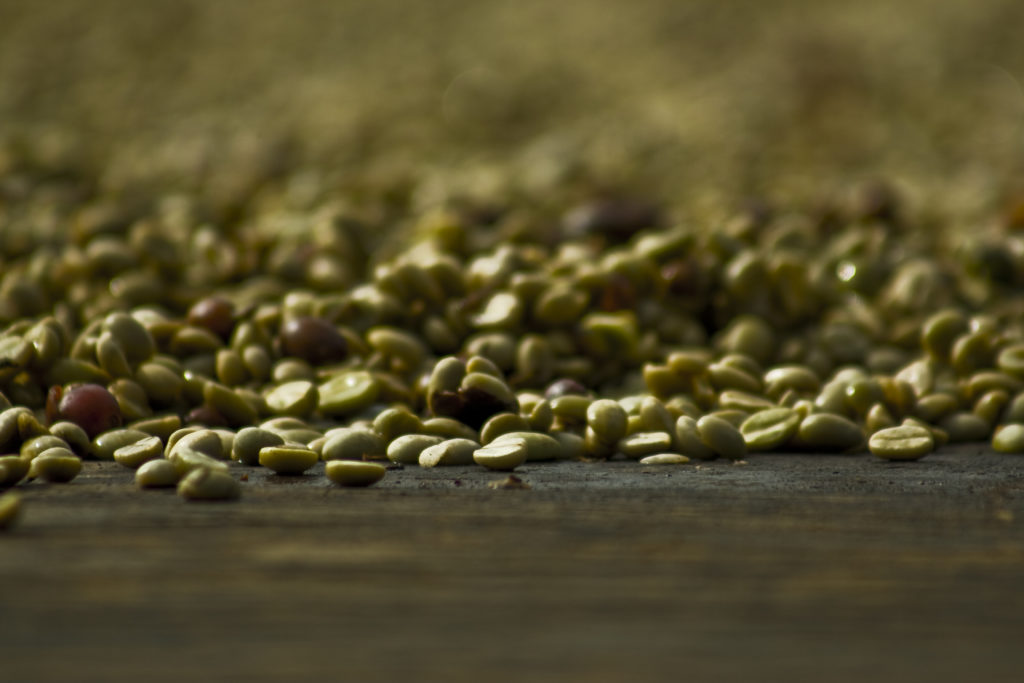
Hawaii Kona Coffee during the fermentation process – https://flic.kr/p/8tNB56
Molokai Coffee
What is it?
This coffee is a medium roast with a rich body and mild acidity. You will also taste hints of chocolate in this brew. Additionally, Molokai coffee is made with completely sundried Arabica beans grown in the volcanic red soils of Kualapuu on the Hawaiian island of Molokai. There are several variations of this coffee, including Muleskinner, Malulani, and Molokai Island Princess.
Muleskinner is a dark roast that is naturally dried with a full-bodied, husky taste that is smooth. The name holds deep meaning for Malulani; “malu” refers to shelter, shade, and inner stillness whereas “lani” denotes the celestial realm. Malulani is often translated to mean “peaceful strength.”
Malulani coffee is gently roasted to a subtle medium roast with mild acidity. You will also taste a hint of chocolate with this coffee. The Molokai Island Princess variety includes Polynesian vanilla bean for a unique flavor.
Where does it come from?
This coffee is grown, processed, and roasted in Molokai, Hawaii. Molokai is an island in Maui County with vivid red soil. The area in which this Arabica coffee is grown is traditionally known as Kualapuu or “Sweet Potato Hill.” The only place Molokai coffee is grown is on a 500-acre plantation in this area. This plantation also offers self- guided tours and features an espresso bar and gift shop. Additionally, during lunchtime on Tuesdays you will hear live local music.
How much does it cost?
Molokai coffee is not absurdly expensive like some of the other specialty coffee beans. It will cost you only around $20 per eight-ounce bag of whole bean or ground coffee. The price for these coffees varies depending upon which type you choose, but they are all priced right around $20 per pound.
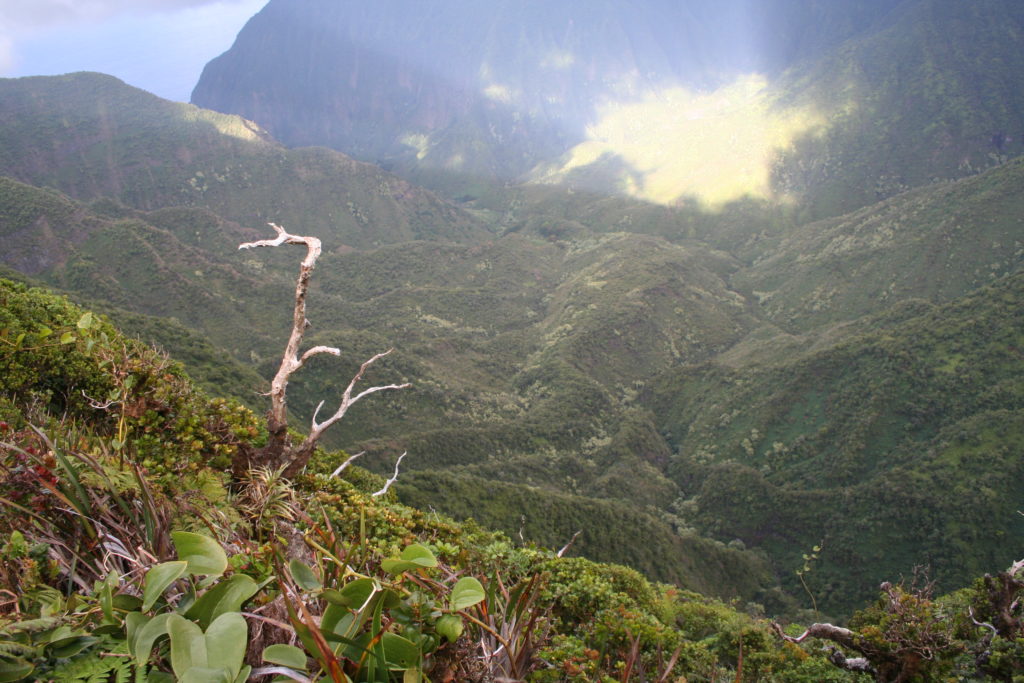
The Coffee Growing Region Molokai. – https://flic.kr/p/7RMm76
Black Ivory Coffee
What is it?
Black Ivory claims to be the world’s rarest coffee; the process to create this coffee involves natural refinement by Thai elephants. Arabica coffee cherries are mixed with a favorite food of the particular elephants who will be eating them, such as banana, tamarind, or rice. Over the following 12 to 72 hours, the elephant will digest the coffee cherries and deposit them. These partially digested cherries are then collected, washed, raked, and dried by the sun.
Once the coffee cherries have sufficiently dried they are sorted and hulled by machines and then sorted again by hand. Only the largest sizes with no physical defects are selected, to ensure an even roast. The beans are then roasted to order, to ensure freshness. Because of this selective and hands on process, there is only a very small amount of Black Ivory Coffee available on the market. A cup of this brew is quite distinctive, with chocolate and spice flavors with hints of grass and red cherry. This creates a delicate cup of coffee that like Kopi Luwak lacks bitterness.
Where does it come from?
Black Ivory Coffee comes exclusively from northern Thailand in the rural village of Ban Takland, Surin, a remote part of Thailand. Coffee production takes place on the Golden Triangle Asian Elephant Foundation, an elephant refuge. The location of this refuge is at the place where Thailand, Myanmar, and Laos meet, otherwise known as The Golden Triangle.
How much does it cost?
Because this coffee is so incredibly exclusive, only 150 kg are allocated for private sale each year, you can be sure the price will be high. The official Black Ivory Coffee website offers an assortment of packages that include brewers and glasses among other things. The coffee itself can be bought in an array of sizes as well. As usual, the more you buy the more you save by weight, for 1.1 pounds, you will pay $1000.00, for double that only $1800.00. Single packages are also available for $85 for 1.23 ounces. This coffee can also be found on Amazon.com at prices up to around $90 for 1.28 ounces of whole beans. On the same website, a three pack or 3.68 ounces of beans will be slightly less expensive by weight, at $215 or $58.11 per ounce.
Controversy
As with Kopi Luwak Coffee, Black Ivory Coffee is not without controversy. However, people think that coffee is less controversial than civet coffee because it is produced on an elephant refuge. This is not really true as coffee beans are not a natural part of an elephant’s diet. Furthermore, only eight per cent of the sales of this coffee are donated to the foundation that runs the refuge.
Conversely, the exclusivity of this coffee is also maintained due to the small number of elephants used in the process, only 20 elephants eat coffee cherries. Additionally, veterinarians are on site and have run a battery of tests, concluding that the elephants are not impacted by eating the coffee cherries, however long term impacts remain obviously unknown. Caffeine is not thought to be absorbed into their system after they consume them. Because some profit goes back to the elephants and these are not creatures that could live sustainably alone in the wild, the controversy appears to be a little white washed. It is not a coffee that we recommend to be honest, as the whole process is just so unnatural and the long-term effects for the animals consuming something that is not usually part of their diet are unknown.
Saint Helena Coffee
What is it?
Saint Helena Coffee is a delicate bean with notes of black cherry, a fruity acidity, and a chocolaty after taste. This coffee is wet processed, to create a semi-translucent sheen on the green bean. The coffee beans go through a natural fermentation process after being fully washed. Additionally, the beans are sun dried.
Relying on nature for this part of the process is very slow, and takes about four months to complete. The island is ideal for coffee growing, but due to its remote location, there is limited labor available; leading to the slight exclusivity of this product.
Where does it come from?
St. Helena Coffee comes from the Island of St Helena. This sub-tropical island is small, only 122 square kilometres, and mountainous. The island is located in the South Atlantic Ocean, relatively near to Namibia and Angola, situated 1,950 kilometers west of the mouth of the Cunene River, the border between these countries. The island is 4,000 kilometers east of Rio de Janeiro, Brazil. This volcanic island is a British Overseas Territory.
How much does it cost?
Because of the rarity of this coffee bean, the price is generally high off the island. When Starbucks St Helena Reserve Coffee went up for sale it was $10 per ounce or $80 for a bag weighing a half pound. This is about the price you will pay for anyone roasting St. Helena Island Coffee, it is a small operation that produces a great quality product, thus you need to pay for both quality and scarcity.
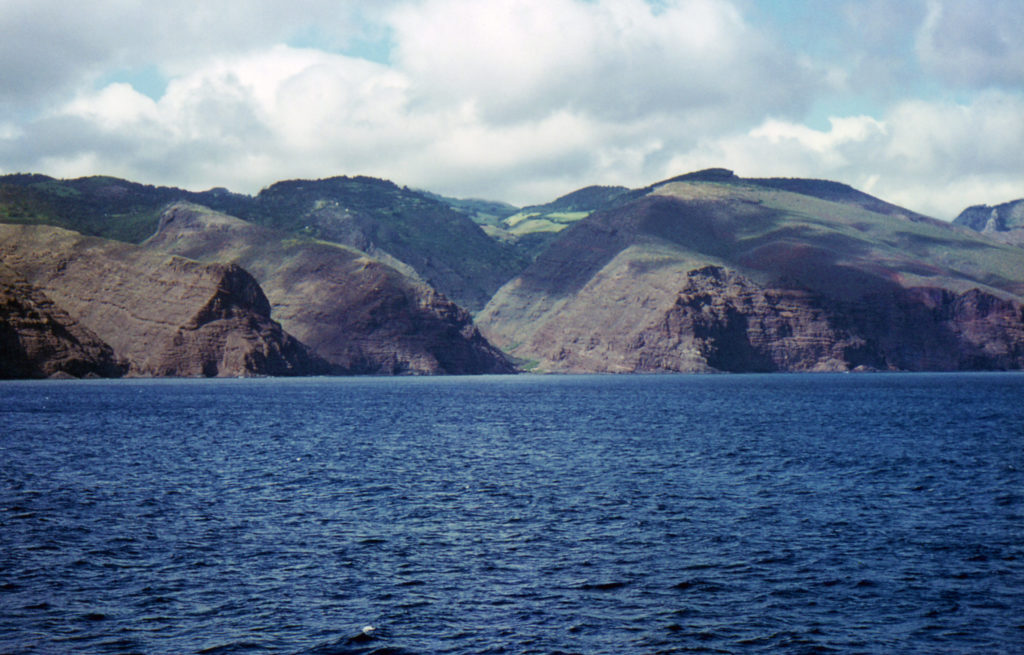
Saint Helena, where Coffee is grown – https://flic.kr/p/VUuHsh
Ospina Coffee
What is it?
Ospina coffee is created with handpicked Arabica typica beans. Once the beans are washed and fermented, they are dried in the sun before being milled and perfectly roasted. These beans are lovingly cultivated from planting to brewing. The seeds are planted in beds of sand and covered with wood shavings until germination is complete. Once two leaves appear, the plants are moved to black soil in the nursery until they are six months old. At this time the plants are transferred to their orchard of coffee trees where these plants can grow up to 30 feet tall. Once these trees are mature, they will bloom once a year. When in bloom the flowers on these trees smells vaguely like jasmine. The coffee cherries are ready for harvest about three months after they bloom. To ensure that only ripe and ideal coffee cherries are selected, Ospina Coffee cherries are handpicked.
The coffee cherries are processed by using the wet method then sun dried for about five weeks. At this point the beans are sorted by hand once again to remove any damaged beans. In this state, the beans are stored in jute bags until they are ready to be exported. Once they are ready to be shipped the outer shell is removed and the beans are sorted again for quality and size. This laborious process speaks of the level of quality and care that goes into every bean of Ospina Coffee.
Where does it come from?
Don Mariano Ospina Rodriguez created its first coffee plantation in Colombia, where Ospina Coffee is still grown today. This plantation was located on the slopes of Fredonia in the Andes mountains. The soil here is volcanic and rich. The plantation is surrounded by tropical forest creating ideal conditions for coffee growing.
How much does it cost?
There is an array of Ospina Coffee products available for purchase. As you may have guessed this coffee is quite expensive. However, because of the range of products, Ospina Coffee does offer some different price points. Different varieties of Ospina Coffee are available from $60 for 250 grams all the way up to $770 for the same weight of beans.
Final Thoughts on Expensive Coffees – are they worth the money?
We hope that you have enjoyed this round up of the most expensive coffees. It is easy to see how the combinations of quality and scarcity may lead to high production costs for many of these coffees, and hence higher prices to the consumer. Despite this, the improved tastes of these products still mean that they are good value for money, especially for those with a more refined palate. We at Kopi luwak Direct are proud of our products and do not cut corners on quality or animal and human welfare. With this in mind we are proud to put ourselves forward as a source of high quality coffee both for the connoisseur and for those looking to give someone a unique gift.
If you’d like to learn how to brew high quality coffee then please visit our Brewing Guides page here.
